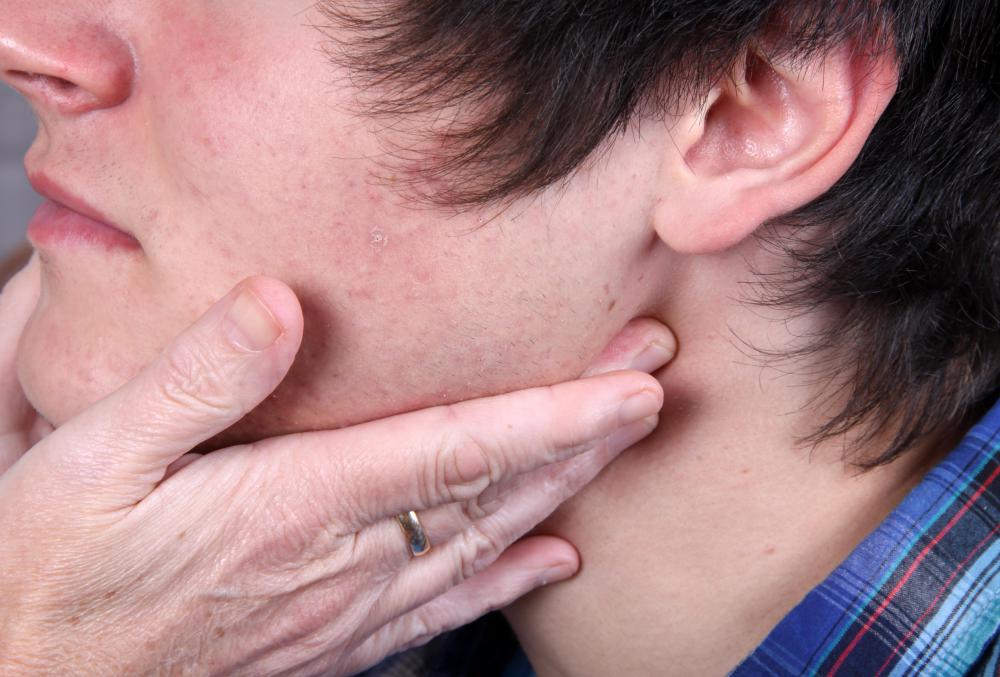At TheHealthBoard, we're committed to delivering accurate, trustworthy information. Our expert-authored content is rigorously fact-checked and sourced from credible authorities. Discover how we uphold the highest standards in providing you with reliable knowledge.
What is Leukemia?
As medical science progresses, treatments for diseases once thought untreatable have emerged. One disease that can now often be treated is leukemia. This is a cancer of the blood. It affects the body's ability to fight infection, heal itself and function normally.
There are four major types of leukemia, and several subtypes within each category. The main types are acute and chronic lymphocytic leukemia, and acute and chronic myeloid leukemia. As a rule, the acute types progress quickly, while the chronic diseases progress more slowly. Chronic lymphocytic and acute myeloid are the most common kinds, while acute lymphocytic is the most common in children.

In lymphocytic leukemia, the bone marrow produces too many lymphoblasts. A lymphoblast is an immature white blood cell formed from a lymphoid stem cell. In myeloid leukemia, too many immature white blood cells are present. These white blood cells are formed from myeloid stem cells, which also form red blood cells and platelets.
Leukemia may be caused by a genetic defect, or it may be a result of exposure to high levels of radiation or certain chemicals. It may also be caused by medications used to treat other types of cancer. Persons with Down Syndrome are also at a higher risk for this disease.

Regardless of the type of leukemia a person may have, the symptoms are often similar. Symptoms may include fevers or night sweats, frequent infections, a weak or tired feeling, headache, bleeding and bruising easily, pain in the bones or joints, abdominal swelling or discomfort, swollen lymph nodes and weight loss. None of these are diagnostic per se, but taken together, they often point to leukemia as a cause. Diagnosis is made through a biopsy of the bone marrow, which indicates the abnormal cells.

Once the physician has a positive diagnosis of leukemia, he or she will often refer the patient to an oncologist who specializes in treating it. The specialist will probably consult with other doctors in the field about the patient, and they will begin to assemble a treatment plan. Treatment will depend on the types the patient has. With early stage chronic lymphocytic leukemia, for example, a patient may not require immediate treatment, but instead, may be tested for signs of the disease's progression. Although this type can rarely be cured, patients can achieve and maintain mostly symptom-free remission.

Chemotherapy, radiation therapy, immunotherapy and bone marrow transplants are the main weapons in the arsenal to treat leukemia. The immediate goal of treatment is to bring a patient into a symptom-free remission. The long-term goal is to keep the patient in remission. Patients may receive one or a combination of these treatments to achieve a cure. Many patients with acute conditions can be cured, so immediate treatment should always be considered.

Hospitals like St. Jude's Children's Research Hospital in Memphis, Tennessee, have been at the forefront of research for treatment and cures for leukemia, and their research has saved an untold number of lives. With the advances in medical science in just the past 15 years or so, this disease is no longer the death sentence it once was. Patients now have hope for a cure.
AS FEATURED ON:
AS FEATURED ON:
















Discussion Comments
My husband was diagnosed nine years ago with CML at age 31. Nine years and in remission. He did not have the chance to try the new treatments that are now available, although I do know of a friend whose mother was diagnosed eight years ago and treated with new medicines as well as chemo and she is still going strong!
It can be a long and tiring road with hurdles along the way. Be there for your cousin and remind him of how strong he is! Staying positive is so important in fighting and also recovery! My husband still struggles emotionally today with all he went through. However, he is fit and lives life with a very different outlook! Health wise, he sometimes struggles with colds and flu, but other than that, he's A-OK! Fingers crossed!
I hope your cousin makes a full recovery and goes on to live a happy and productive life. All the best!
To Noah, there are many different approaches to the treatment of portal vein circulation diseases such as leukemia. many homeopathic physicians have identified the need to strengthen the body and this is especially important when undergoing allopathic (medical official) treatments. However, there are resources online which you can use to help your cousin.
Traditional therapy is the most harmful and dangerous way of treating the body, actually killing the patient rather than curing them.
Good luck.
I just recently learned of my cousin being diagnosed with lymphocytic leukemia, he's only in his early 20's. I know little about the disease, and only that it's cancer of the blood. I don't know how successful treatment is today, how long he will have to be in treatment; from what I read it sounds like a long and tiring process. I'm hoping for a full, quick recovery. Has anyone experience this disease first hand or know someone close to them that has? what type of life one lives after treating it?
Post your comments